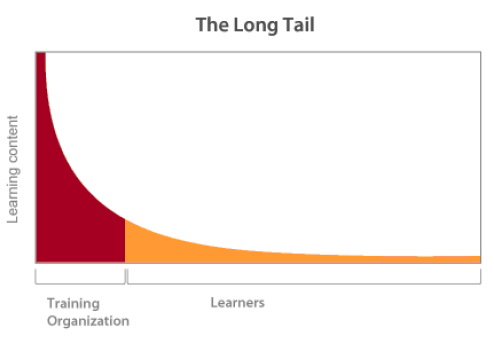The knowledge-driven economy has brought with it a major transformation in which jobs involving the most complex type of interactions make up the fastest-growing segment in many industries.
When the goal posts move constantly, and situations change rapidly, formal learning once or twice a year doesn’t provide the experience or knowledge that workers require. I contend that there needs to be a significant shift of budgets and resources from formal learning settings to informal situations, where the majority of learning actually takes place.
Making informal knowledge transfer a reality: communities of practice
With the growing importance of informal knowledge transfer, organizations are increasingly looking to Communities of Practice (CoPs) as a solution. CoPs are distributed groups of people who share a common concern, problem, mandate, or sense of purpose.
CoPs build on existing formal content tools such as portal and learning management systems, and on team and productivity tools. Communities of Practice enable organizations to add a new dimension — the informal organization. Communities offer a way for peers to not only consult learning materials from the institution, but also combine information with learning materials they create and share amongst themselves. Community members attend question and answer forums, and participate in professional networking where peers, mentors, and subject matter experts connect and confer to solve problems.
CoPs deliver unique benefits:
- The peer-to-peer environment fosters employees’ natural trust in advice from someone in their situation. It encourages emotional and instructional support.
- The focus is on context-specific information sharing, rather than on broadly applicable advice. Users seek information to solve immediate problems, so there is enormous benefit in the information being available almost immediately.
- A CoP replaces the one-way flow of information that is typical of training programs, and offers fluid, multipronged conversations instead.
In the current climate, organizations looking to create a community need to do more than implement a fluffed-up portal solution. There’s a growing need to leverage the power of communities within an enterprise. Such an effort will only be effective if it takes into account new workforce and technology trends, as well as new business models. One such model is Chris Anderson’s Long Tail which explains new business models that are changing the economics of doing business through the Internet. (See Figure 1.) Just as the “Long Tail” has changed the rules for the flow of products on the Internet, it is changing the rules of learning and training in the enterprise.

Figure 1 “The Long Tail” illustrates how much learning takes place outside the training organization.
Time-consuming, inflexible, and expensive formal learning approaches trap most organizations in their economics. Much as the Internet changed the economics of book distribution, the economics of learning content are changing within organizations. The Long Tail is allowing organizations to tap into the next source for enterprise learning content — the learners themselves — by empowering them to teach each other in community environments. With less organizational oversight, these groups can produce an amount of learning resources equivalent to the formal approach in a cheaper and more flexible way.
Implementing Communities of Practice
Successful communities rely in part on actual community process and structure, and in part on the actual technology platform that underpins the community system.
On the process side, consider these questions up front:
- What communities will offer my organization the highest potential return?
- How will we find and train community leaders?
- How will we continue to engage new users beyond the launch of the community? For many organizations, technology has been a stumbling block when it comes to setting up a CoP. Organizations often look to implement a CoP based on systems designed primarily for purposes other than communities.
When addressing technology as part of an overall CoP strategy, enterprises should consider the following:
- Is this technology platform designed to address Community-specific challenges?
- What type of functionality does this platform offer the organization? Does it deliver advanced features such as ranking, filtering, and other smart tools?
- Does the technology provide features and benefits that address the participation of leaders, contributors, active members, and lurkers in the Community?
- How does this technology integrate with our other learning and collaboration systems?
Conclusion
Formal training has been stretched to its limit when it comes to successfully supporting learning for workers facing non-routine and complex work. Organizations must address the need for informal learning systems that provide access to critical information and experience on-demand, while addressing the need for collective intelligence strategies. Communities of Practice offer organizations a proven model for combining collaboration and learning in order to gain a significant competitive advantage.



